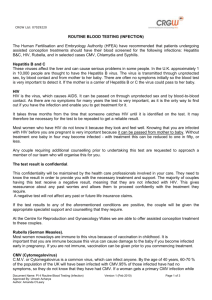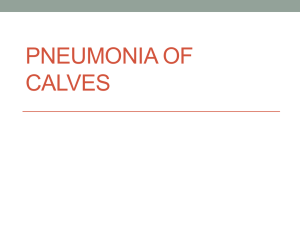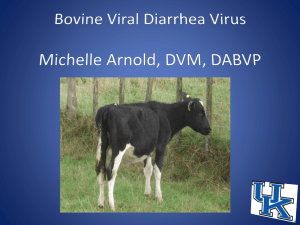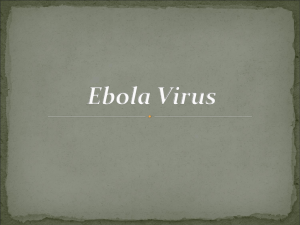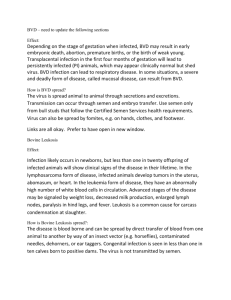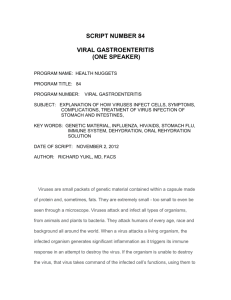BVD
advertisement
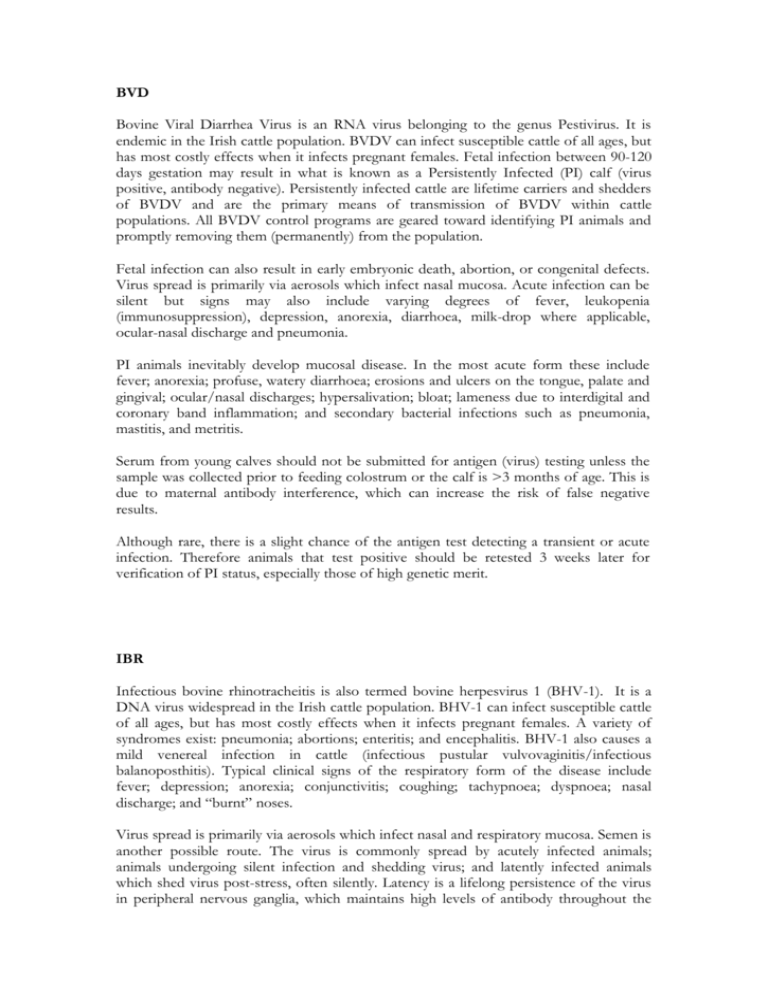
BVD Bovine Viral Diarrhea Virus is an RNA virus belonging to the genus Pestivirus. It is endemic in the Irish cattle population. BVDV can infect susceptible cattle of all ages, but has most costly effects when it infects pregnant females. Fetal infection between 90-120 days gestation may result in what is known as a Persistently Infected (PI) calf (virus positive, antibody negative). Persistently infected cattle are lifetime carriers and shedders of BVDV and are the primary means of transmission of BVDV within cattle populations. All BVDV control programs are geared toward identifying PI animals and promptly removing them (permanently) from the population. Fetal infection can also result in early embryonic death, abortion, or congenital defects. Virus spread is primarily via aerosols which infect nasal mucosa. Acute infection can be silent but signs may also include varying degrees of fever, leukopenia (immunosuppression), depression, anorexia, diarrhoea, milk-drop where applicable, ocular-nasal discharge and pneumonia. PI animals inevitably develop mucosal disease. In the most acute form these include fever; anorexia; profuse, watery diarrhoea; erosions and ulcers on the tongue, palate and gingival; ocular/nasal discharges; hypersalivation; bloat; lameness due to interdigital and coronary band inflammation; and secondary bacterial infections such as pneumonia, mastitis, and metritis. Serum from young calves should not be submitted for antigen (virus) testing unless the sample was collected prior to feeding colostrum or the calf is >3 months of age. This is due to maternal antibody interference, which can increase the risk of false negative results. Although rare, there is a slight chance of the antigen test detecting a transient or acute infection. Therefore animals that test positive should be retested 3 weeks later for verification of PI status, especially those of high genetic merit. IBR Infectious bovine rhinotracheitis is also termed bovine herpesvirus 1 (BHV-1). It is a DNA virus widespread in the Irish cattle population. BHV-1 can infect susceptible cattle of all ages, but has most costly effects when it infects pregnant females. A variety of syndromes exist: pneumonia; abortions; enteritis; and encephalitis. BHV-1 also causes a mild venereal infection in cattle (infectious pustular vulvovaginitis/infectious balanoposthitis). Typical clinical signs of the respiratory form of the disease include fever; depression; anorexia; conjunctivitis; coughing; tachypnoea; dyspnoea; nasal discharge; and “burnt” noses. Virus spread is primarily via aerosols which infect nasal and respiratory mucosa. Semen is another possible route. The virus is commonly spread by acutely infected animals; animals undergoing silent infection and shedding virus; and latently infected animals which shed virus post-stress, often silently. Latency is a lifelong persistence of the virus in peripheral nervous ganglia, which maintains high levels of antibody throughout the animals life. The diagnosis of IBR is simplified due to latency – antibody positive = virus positive (usually in a latent state). EBL Bovine Leukemia Virus is the causative agent of enzootic bovine leucosis (EBL), a highly fatal form of cancer in cattle. Ireland is free from the disease. Clinical signs are often absent until the extremely late stages of the disease, although a persistent lymphocytosis is a common finding. Late stage leucosis is characterized by lymphadenopathy (enlarged lymph nodes) in various regions of the body, commonly in the subiliac (pelvic) region. These tumors can frequently be detected by rectal exam. Tumors can also often be found in the abomasum, uterus and the spine. Other clinical signs are vague such as weight loss, weakness, decreased production and inappetance Once infected with BLV virus, cattle are lifetime carriers and shedders of the virus. Virus is spread through animal to animal contact via blood, milk/colostrum and in-utero from dam to offspring. Another important means of transmission is blood contamination of needles and surgical instruments in addition to rectal sleeves used in multiple cows. The EBL ELISA test is used to detect the presence of anti-EBL antibodies in serum. A positive result indicates exposure to the virus.

